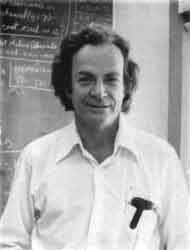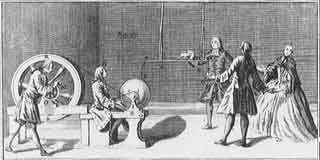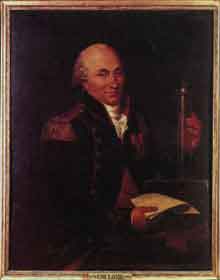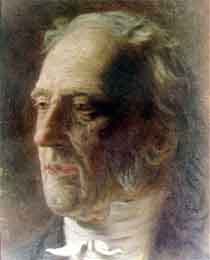|
|
|
|
|
Interpreting electrical phenomena : 1784-85
|
|
|
•A well-known Nobel prize winner, Richard Feynman, in  1963, in an epoch-making attempt at fostering scientific education, gave a complete summary of the laws of electromagnetism in only one page. Although some of these laws have familiar names, understanding the summary at a glance is without doubt a daunting task, even for an experienced reader. If we add to this page some names and chronological data, we see that contributions span more than a century and came from very different quarters. We shall focus on just two, referring to electrostatics: Coulomb and Volta's laws. What is their meaning? 1963, in an epoch-making attempt at fostering scientific education, gave a complete summary of the laws of electromagnetism in only one page. Although some of these laws have familiar names, understanding the summary at a glance is without doubt a daunting task, even for an experienced reader. If we add to this page some names and chronological data, we see that contributions span more than a century and came from very different quarters. We shall focus on just two, referring to electrostatics: Coulomb and Volta's laws. What is their meaning?
|
|
•Electricity in the last quarter of the 18th century was a difficul t subject, part of what are known today as the " Baconian Sciences ". Electrical phenomena were new and exciting and many attempts were made at interpreting, quantifying and mathematising them. These attempts, even if they eventually gave birth to a sort of " Standard Model ", were rooted in the natural philosophy and in the epistemological criteria of the time. t subject, part of what are known today as the " Baconian Sciences ". Electrical phenomena were new and exciting and many attempts were made at interpreting, quantifying and mathematising them. These attempts, even if they eventually gave birth to a sort of " Standard Model ", were rooted in the natural philosophy and in the epistemological criteria of the time.
|
|
•Coulomb was a military engineer, one of the f irst to have vast mathematical skills. Working on friction, he invented a very precise, if very delicate, instrument: the irst to have vast mathematical skills. Working on friction, he invented a very precise, if very delicate, instrument: the  torsion balance. He decided to apply it to quantify electrical attractions and repulsions, assuming a strict torsion balance. He decided to apply it to quantify electrical attractions and repulsions, assuming a strict  Newtonian gravitational framework. He succeeded with repulsion, even if he just provided three measures of only one experiment (and the third, by his own admission, was rather faulty). To explain attraction, a new device was invented, and to complete the law, the numerator was (simply) added (how could he define three quantities with one instrument?). This " elementary " law at first did not help to deal with standard bodies (the history of its acceptance is itself delightful). Given the similarities with Newtonian gravity, it eventually led to applying to electrostatics the mathematical tools of celestial dynamics, and specifically (Laplace and Poisson’s) partial differential equations, the so-called pseudo-contiguous action. Was it a stable scientific acquisition ? Certainly yes, from a quantitative point of view; certainly no, from a theoretical perspective: Feynman is rather outspoken about that. Newtonian gravitational framework. He succeeded with repulsion, even if he just provided three measures of only one experiment (and the third, by his own admission, was rather faulty). To explain attraction, a new device was invented, and to complete the law, the numerator was (simply) added (how could he define three quantities with one instrument?). This " elementary " law at first did not help to deal with standard bodies (the history of its acceptance is itself delightful). Given the similarities with Newtonian gravity, it eventually led to applying to electrostatics the mathematical tools of celestial dynamics, and specifically (Laplace and Poisson’s) partial differential equations, the so-called pseudo-contiguous action. Was it a stable scientific acquisition ? Certainly yes, from a quantitative point of view; certainly no, from a theoretical perspective: Feynman is rather outspoken about that.
|
|
|
|
•A few years earlier, Volta, (who from a very early age was convinced, not without reason, that he possessed the " genius of electricity "), formulated a different law to quantify electrical phenomena, probably based on possessed the " genius of electricity "), formulated a different law to quantify electrical phenomena, probably based on  equilibrium principles and on an analogy with Boyle’s pressure law. Volta was able to define his own theoretical terms and to invent a suitable instrument: equilibrium principles and on an analogy with Boyle’s pressure law. Volta was able to define his own theoretical terms and to invent a suitable instrument:  the electrometer. He explicitly refused Coulomb’s contribution and a careful comparison of the two instruments, in the light of the natural philosophy of the time, shows us the deep differences between the electrometer. He explicitly refused Coulomb’s contribution and a careful comparison of the two instruments, in the light of the natural philosophy of the time, shows us the deep differences between  Volta's tension and Coulomb's force. Volta's tension and Coulomb's force.
|
|
|
|
|
|
|